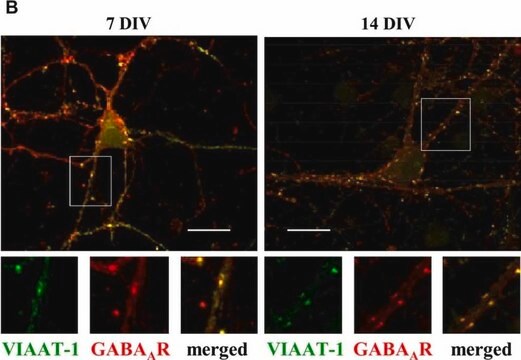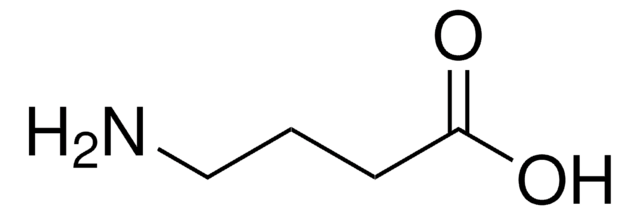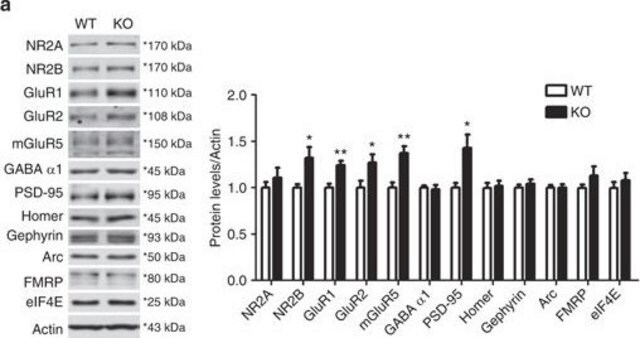05-474
Anti-GABA A Receptor β2/3 Antibody
clone 62-3G1, Upstate®, from mouse
Sinônimo(s):
GABA(A) receptor subunit alpha-1, gamma-aminobutyric acid (GABA) A receptor, alpha 1, gamma-aminobutyric acid A receptor, alpha 1
About This Item
Produtos recomendados
fonte biológica
mouse
Nível de qualidade
forma do anticorpo
purified antibody
tipo de produto de anticorpo
primary antibodies
clone
62-3G1, monoclonal
reatividade de espécies
rat, bovine, human
fabricante/nome comercial
Upstate®
técnica(s)
immunohistochemistry: suitable
immunoprecipitation (IP): suitable
western blot: suitable
Isotipo
IgG
nº de adesão UniProt
Condições de expedição
wet ice
modificação pós-traducional do alvo
unmodified
Informações sobre genes
human ... GABRA1(2554)
Descrição geral
Especificidade
Imunogênio
Aplicação
Immunohistochemistry: This antibody has been reported to detect the GABAA Receptor β2 and β3 subunits in paraffin embedded and frozen rat brain sections which had been fixed with 4% paraformaldehyde or 0.1% glutaraldehyde and permeabilized with Triton X-100.
Neuroscience
Neurotransmitters & Receptors
Qualidade
Western Blot Analysis: 0.5-2 μg/mL of this antibody detected the GABAA Receptor β2 and β3 subunits from 20 μg of rat brain microsomal preparation (Catalog # 12-144).
Descrição-alvo
forma física
Armazenamento e estabilidade
Nota de análise
Brain tissue
Outras notas
Informações legais
Exoneração de responsabilidade
Not finding the right product?
Try our Ferramenta de seleção de produtos.
Código de classe de armazenamento
10 - Combustible liquids
Classe de risco de água (WGK)
WGK 1
Certificados de análise (COA)
Busque Certificados de análise (COA) digitando o Número do Lote do produto. Os números de lote e remessa podem ser encontrados no rótulo de um produto após a palavra “Lot” ou “Batch”.
Já possui este produto?
Encontre a documentação dos produtos que você adquiriu recentemente na biblioteca de documentos.
Nossa equipe de cientistas tem experiência em todas as áreas de pesquisa, incluindo Life Sciences, ciência de materiais, síntese química, cromatografia, química analítica e muitas outras.
Entre em contato com a assistência técnica







